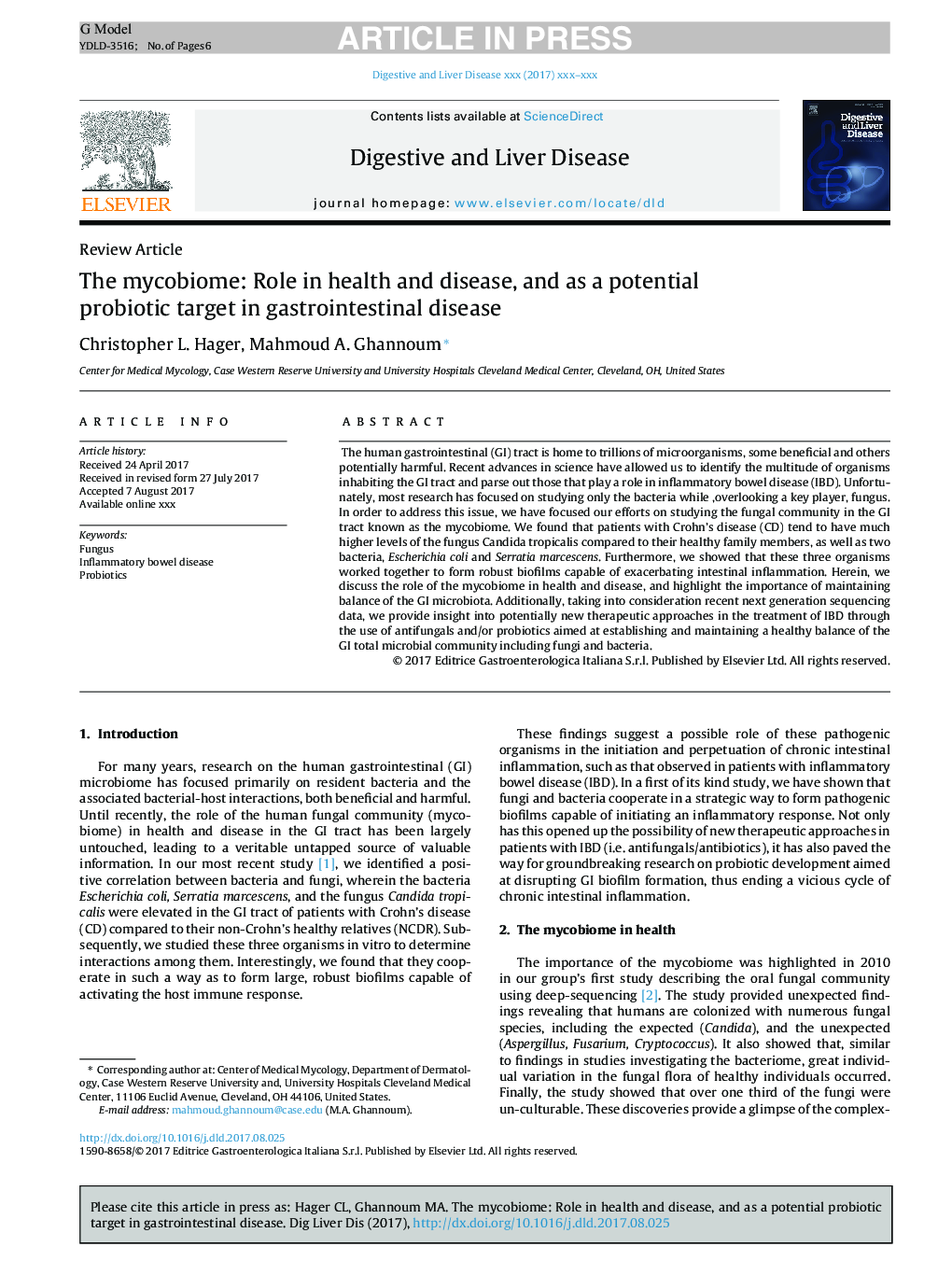| Article ID | Journal | Published Year | Pages | File Type |
|---|---|---|---|---|
| 5655238 | Digestive and Liver Disease | 2017 | 6 Pages |
Abstract
The human gastrointestinal (GI) tract is home to trillions of microorganisms, some beneficial and others potentially harmful. Recent advances in science have allowed us to identify the multitude of organisms inhabiting the GI tract and parse out those that play a role in inflammatory bowel disease (IBD). Unfortunately, most research has focused on studying only the bacteria while ,overlooking a key player, fungus. In order to address this issue, we have focused our efforts on studying the fungal community in the GI tract known as the mycobiome. We found that patients with Crohn's disease (CD) tend to have much higher levels of the fungus Candida tropicalis compared to their healthy family members, as well as two bacteria, Escherichia coli and Serratia marcescens. Furthermore, we showed that these three organisms worked together to form robust biofilms capable of exacerbating intestinal inflammation. Herein, we discuss the role of the mycobiome in health and disease, and highlight the importance of maintaining balance of the GI microbiota. Additionally, taking into consideration recent next generation sequencing data, we provide insight into potentially new therapeutic approaches in the treatment of IBD through the use of antifungals and/or probiotics aimed at establishing and maintaining a healthy balance of the GI total microbial community including fungi and bacteria.
Related Topics
Health Sciences
Medicine and Dentistry
Endocrinology, Diabetes and Metabolism
Authors
Christopher L. Hager, Mahmoud A. Ghannoum,
